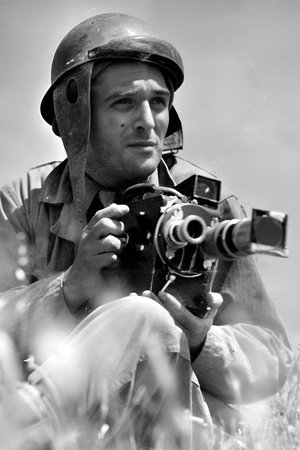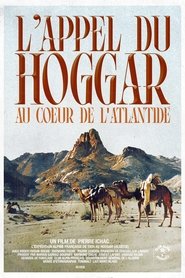Pierre Ichac
Pierre Ichac, born June 7, 1901 in Paris and died August 20, 1978 in Clichy, was a French photographer, filmmaker, reporter, explorer, and ethnologist specializing in Africa, the Algerian Sahara, and sub-Saharan Africa. He was the son of financial journalist Eugène Ichac and Jeanne Manteau, and the brother of mountain filmmaker Marcel Ichac. He began his career in 1922 as an agricultural engineer in the sugar refineries of Upper Egypt. Pierre Ichac then made several scientific films on Egypt, the Middle East, and the Hoggar, where he spent two six-month stays with the Tuaregs. A report on the Hoggar Tuaregs published in the magazine VU in 1930 brought him to the attention of the general public. In 1932, he served as assistant to Austrian director Georg Wilhelm Pabst on the production of Atlantis, a film based on the novel by Pierre Benoit and set in the Hoggar Desert. In 1934-1935, he participated in several expeditions to French Equatorial Africa and the Hoggar Desert. He was notably the filmmaker and photographer for the French Alpine expedition alongside Captain Raymond Coche, François de Chasseloup-Laubat, Roger Frison-Roche, and Pierre Lewden. He participated in the discovery of the Mertoutek rock art frescoes. The Coche mission officially discovered the Hoggar rock art sites, which Henri Lhote's mission would later document. From 1935 to 1939, Pierre Ichac was a senior reporter for L'Illustration and Paris Match. He reported on the Ethiopian War (1935-1936), Palestine, Syria, Iraq, the Spanish Civil War (1936), Central Africa (1937), and in 1938 he also participated in Georg Wilhelm Pabst's film The Shanghai Drama, and in the Balkans after the invasion of Czechoslovakia by Nazi Germany (1939). He also produced a report on the first French trans-African airlines. In 1939-1940, he was a war correspondent in France. In 1940, Pierre Ichac participated with Abbé Breuil in the first visits to the newly discovered Lascaux cave, and produced the first photographic report. Between 1942 and 1945, Pierre Ichac was a war correspondent, covering the campaigns in Tunisia, Corsica, and Italy (notably the Battle of Monte Cassino), the landings in Provence, and the fighting in the Jura, the Vosges, and Alsace-Lorraine. He compiled his memories in the book "Nous marches vers la France" (We Are Marching Towards France) (1954). Pierre Ichac had discovered Central Africa during the winter of 1933-1934, while reporting from Chad, Ubangi (now the Central African Republic), and Cameroon. He returned there in 1937. But it was only after the Second World War that he truly devoted himself to this part of Africa. In 1946, as a senior reporter for RTF, Pierre Ichac created a radio program devoted to Africa called Magazine de la France d’outre-mer (Magazine of Overseas France), then L’Afrique et le monde (Africa and the World), which aired until 1964. In 1969, he became vice-president of the Association of Journalists-Writers for Nature and Ecology (JNE), one of the first French environmental advocacy associations. In 1958, Pierre Ichac received the Maurice Bourdet Prize for radio reporting and in 1961, the Pierre Mille Prize, awarded by the French Press Union for his entire body of written and spoken reporting on Africa.

